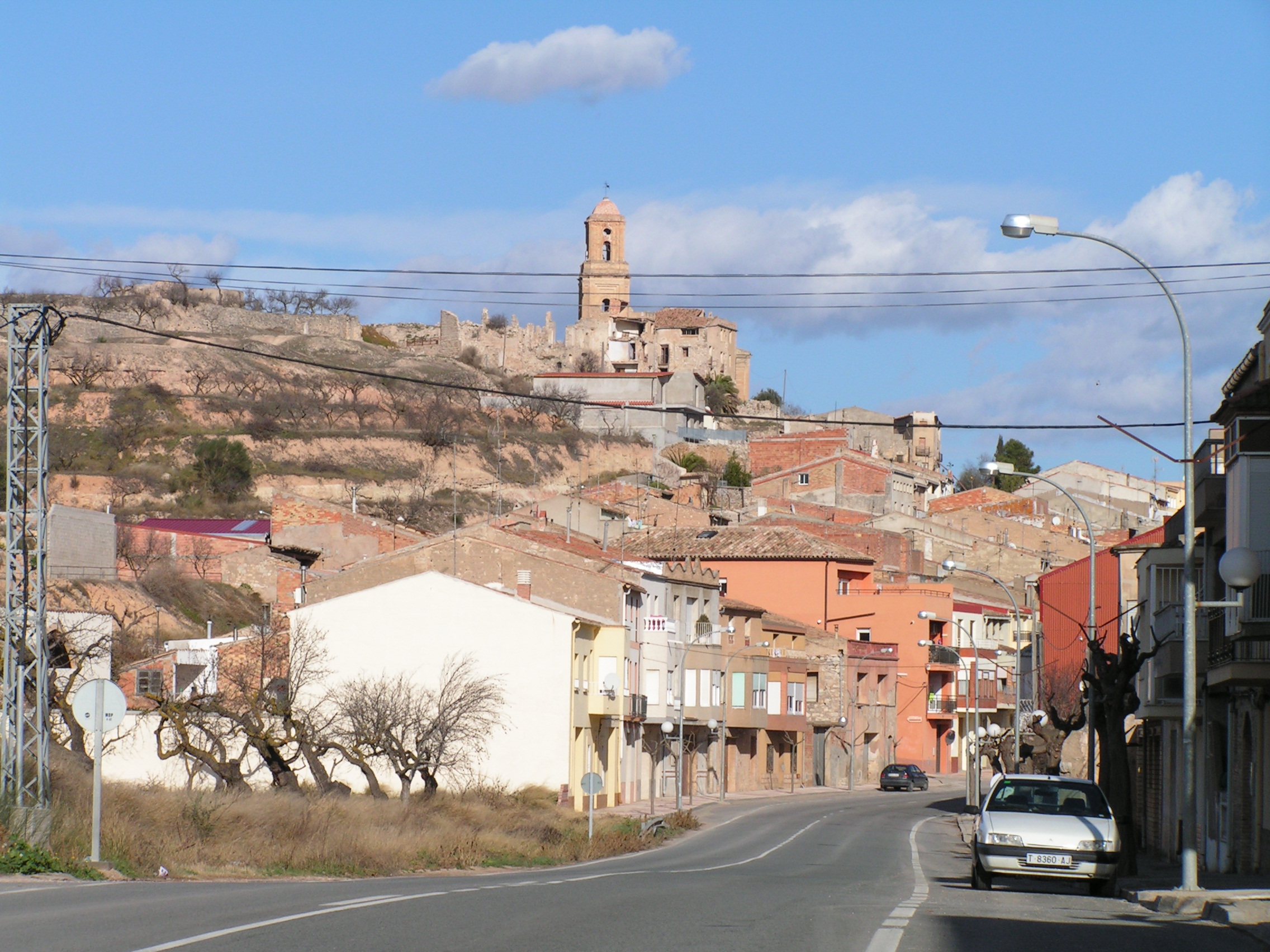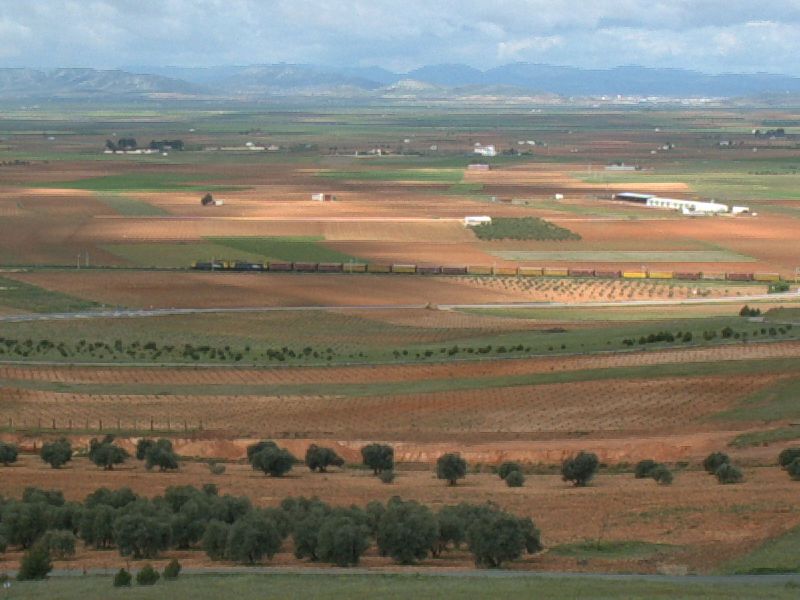|
153rd Mixed Brigade
The 153rd Mixed Brigade was a unit of the Spanish Civil War that took part in the Spanish Civil War. Formed around the old Land and Freedom Column, the unit took part in the battles of Belchite, Aragon and Segre. History The unit was created in June 1937, in the Aragon front, from the militarization of the Land and Freedom Column. It was also joined by elements of various origins, such as the "Battalion of Death" or former POUMists of the 29th Division. Antonio Seba Amorós was appointed to the head of the unit, while the anarchist Francisco Sener Martín was appointed political commissioner. During the first months it went through a training period. Later, the 153rd Mixed Brigade was integrated into the 24th Division of the 12th Army Corps. The unit took part in the Battle of Belchite. Stationed in the rear, in Caspe, the 153rd MB was called to intervene in the new Zaragoza Offensive. After having some difficulties, on 28 August it managed to penetrate Belchite by the Me ... [...More Info...] [...Related Items...] OR: [Wikipedia] [Google] [Baidu] |
Republican Faction (Spanish Civil War)
The Republican faction ( es, Bando republicano), also known as the Loyalist faction () or the Government faction (), was the side in the Spanish Civil War of 1936 to 1939 that supported the government of the Second Spanish Republic against the Nationalist faction of the military rebellion. The name Republicans () was mainly used by its members and supporters, while its opponents used the term ''Rojos'' (Reds) to refer to this faction due to its left-leaning ideology, including far-left communist and anarchist groups, and the support it received from the Soviet Union. At the beginning of the war, the Republicans outnumbered the Nationalists by ten-to-one, but by January 1937 that advantage had dropped to four-to-one. Foreign support The Republican faction hardly received external support from the Allied powers of World War II, due to the International Non-Intervention Committee. The support of the USSR stands out, fundamentally. Together with Mexico, France and Poland at the be ... [...More Info...] [...Related Items...] OR: [Wikipedia] [Google] [Baidu] |
Zaragoza Offensive
The Zaragoza Offensive took place during the Spanish Civil War in 1937. This battle involved the Spanish Republican Army. The main goal of the offensive was to occupy the city of Zaragoza. The main action of the offensive was the battle of Belchite. Background In August 1937, the commander in chief of the Republican Army, Vicente Rojo, decided to launch an offensive in the Aragon front in order to take the regional capital, Saragossa. The main goal of the offensive was to stop the Nationalist offensive against Santander. Furthermore, Saragossa was the communications centre of the whole Aragon front. Opposing forces In the Aragon front the Republican Army had deployed the Army of the East, led by the general Pozas and his chief of staff Antonio Cordon. This army had six divisions ( Lister's 11th Division, 26th Division, 27th Division, Walter's 35th Division, 43rd Division; and Kleber's 45th Division). Furthermore, the Republicans had 200 aircraft and many T-26 and BT-5 t ... [...More Info...] [...Related Items...] OR: [Wikipedia] [Google] [Baidu] |
Catalonia Offensive
The Catalonia Offensive ( ca, Ofensiva de Catalunya, es, Ofensiva de Cataluña) was part of the Spanish Civil War. The Nationalist Army started the offensive on 23 December 1938 and rapidly conquered Republican-held Catalonia with Barcelona (the Republic's capital city from October 1937). Barcelona was captured on 26 January 1939. The Republican government headed for the French border. Thousands of people fleeing the Nationalists also crossed the frontier in the following month, to be placed in internment camps. Franco closed the border with France by 10 February 1939. Background After its defeat at the Battle of the Ebro the Republican Army was broken and would never recover. The Republicans had lost most of their armament and experienced units. Furthermore, in October 1938 the Republican government agreed to withdraw the volunteers of the International Brigades. On the other hand, the Nationalists received new supplies of ammunition, weapons and aircraft from Germany. Furth ... [...More Info...] [...Related Items...] OR: [Wikipedia] [Google] [Baidu] |
Battle Of The Ebro
The Battle of the Ebro ( es, Batalla del Ebro, ca, Batalla de l'Ebre) was the longest and largest battle of the Spanish Civil War and the greatest, in terms of manpower, logistics and material ever fought on Spanish soil. It took place between July and November 1938, with fighting mainly concentrated in two areas on the lower course of the Ebro River, the Terra Alta comarca of Catalonia, and the Auts area close to Fayón ''(Faió)'' in the lower Matarranya, Eastern Lower Aragon. These sparsely populated areas saw the largest array of armies in the war. The battle was disastrous for the Second Spanish Republic, with tens of thousands left dead or wounded and little effect on the advance of the Nationalists. Background By 1938, the Second Spanish Republic was in dire straits. The Republican Northern zone had fallen, and in the winter of 1937/38 the Republican Popular Army had spent its forces in the Battle of Teruel, a series of bloody combats in subzero temperatures aroun ... [...More Info...] [...Related Items...] OR: [Wikipedia] [Google] [Baidu] |
Segre River
The Segre ( or ; french: Sègre) is a river tributary to the Ebro (''Ebre'' in Catalan) with a basin comprising territories across three states: France, Andorra and Spain. The river Segre, known to Romans and Greeks as Sicoris, and to the Arabs of Al-Andalus as Nahr az-Zaytūn (نهر الزيتون, river of Olives) has its sources on the north face of the Pic del Segre or ''Puigmal de Segre'' ("Segre's Peak") in the French department Pyrénées-Orientales (historically the ''comarca'' of Alta Cerdanya), in the Catalan Pyrenees. It follows a western direction all along the Cerdanya (''Cerdagne'') Valley, and crosses the town Saillagouse, the Spanish exclave Llívia and Bourg-Madame. It enters Spain at Puigcerdà and continues west until La Seu d'Urgell, where it meets the Valira River coming from Andorra. From this point it adopts a south-western course across the pre-Pyrenees (with several dams along its gorges) and the western plains of Catalonia. It passes through Balague ... [...More Info...] [...Related Items...] OR: [Wikipedia] [Google] [Baidu] |
3rd Mixed Brigade
The 3rd Mixed Brigade ( es, 3.ª Brigada Mixta), was one of the earliest mixed brigades of the Spanish Republican Army in the Spanish Civil War. It was formed in the fall of 1936 with battalions of the ''Carabineros'' corps and saw major action right away in the Defence of Madrid. This brigade also included female combatants —such as Sergeant ''"La Chata"''— and would take part in most of the major battles of the Spanish Civil War, except in the Battle of Jarama. The brigade's first leader was ''Carabineros'' Lieutenant —later Commander— José María Galán, brother of Fermín Galán, leader of the Jaca Uprising, and of Francisco Galán.Carlos Engel, ''Historia de las Brigadas Mixtas del E. P. de la República'', 1999 The mouthpiece of this military unit was the ''"Tercera Brigada"'' newspaper. The Third Mixed Brigade is mentioned in the lyrics of ''Si me quieres escribir'', one of the most famous songs of the Spanish Republican troops during the Civil War. History ... [...More Info...] [...Related Items...] OR: [Wikipedia] [Google] [Baidu] |
Vilanova De La Barca
Vilanova de la Barca (Officially and in Catalan; es, Villanueva de la Barca) is a municipality in the ''comarca'' of Segrià in Catalonia, Spain. It is situated at the confluence of the Segre and Corb rivers. The Urgell canal provides irrigation water for growing cereals and forage plants. The municipality is linked to Lleida and Balaguer Balaguer () is the capital of the ''comarca'' of Noguera, in the province of Lleida, Catalonia, Spain. It is located by the river Segre, a tributary to the Ebre. The municipality includes an exclave to the east. Balaguer also has a sister city i ... by the C-1313 road and a FGC railroad. Demography References * Panareda Clopés, Josep Maria; Rios Calvet, Jaume; Rabella Vives, Josep Maria (1989). ''Guia de Catalunya'', Barcelona: Caixa de Catalunya. (Spanish). (Catalan). External linksOfficial website Government data pages Municipalities in Segrià Populated places in Segrià {{Lleida-geo-stub ... [...More Info...] [...Related Items...] OR: [Wikipedia] [Google] [Baidu] |
11th Army Corps (Spain)
The XI Army Corps was a military formation belonging to the Spanish Republican Army that fought during the Spanish Civil War. During the war it was deployed on the fronts of Aragon, Segre and Catalonia. History The unit was created in June 1937, within the Eastern Army. It was made up of the divisions 26th, 27th and 32nd, having its headquarters in Sariñena Sariñena is a municipality in the province of Huesca, Aragon, Spain. It is located in the Monegros comarca, near the Sierra de Alcubierre range. The Baroque monastery of Nuestra Señora de las Fuentes is located in the municipal term. Villages .... It covered the front line that ran from the south of Huesca —in union with the X Army Corps (Spain), X Army Corps – to the Ebro river – where, in turn, it united with the XII Army Corps (Spain), XII Army Corps. During the following months some of its forces intervened in the Zaragoza Offensive, Zaragoza and Battle of Belchite (1937), Belchite offensives, which, how ... [...More Info...] [...Related Items...] OR: [Wikipedia] [Google] [Baidu] |

